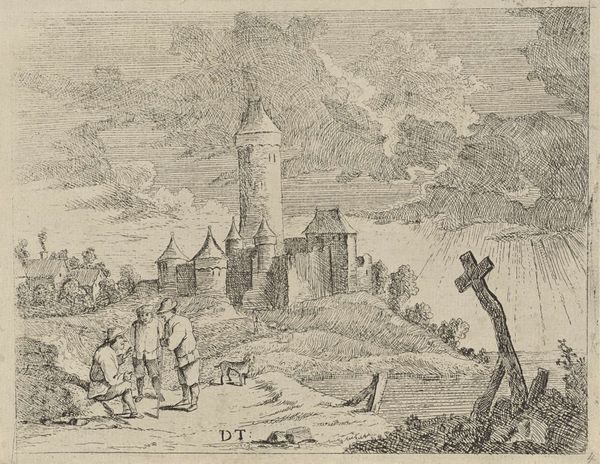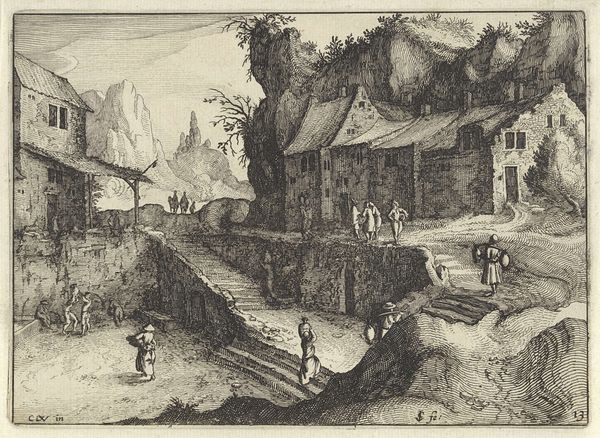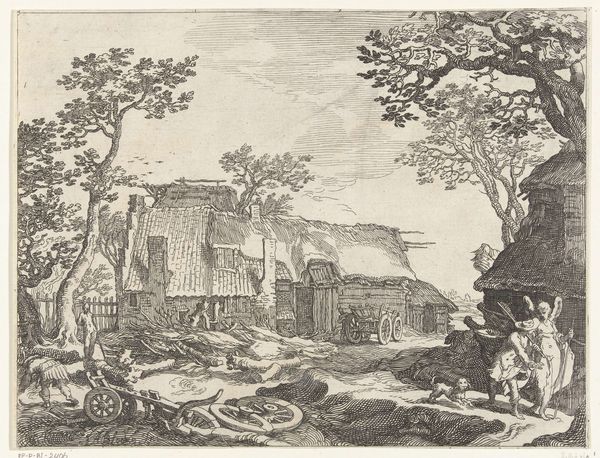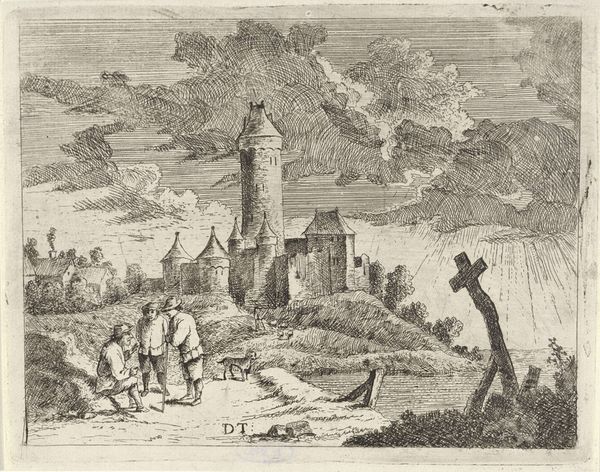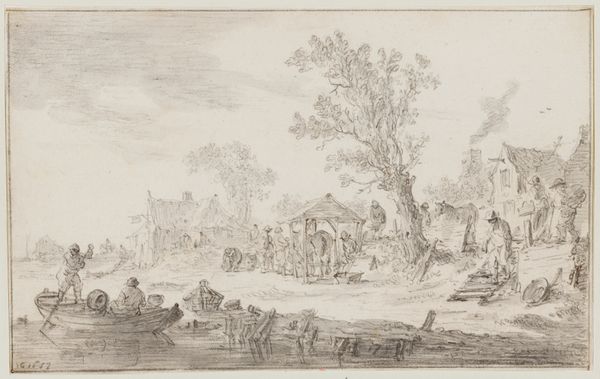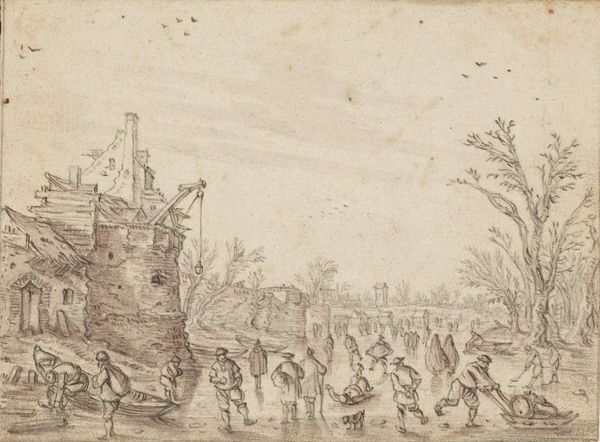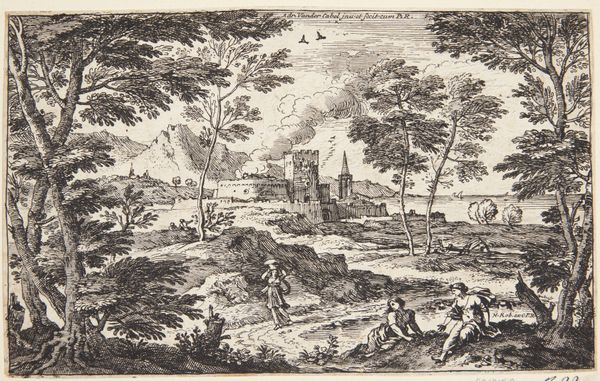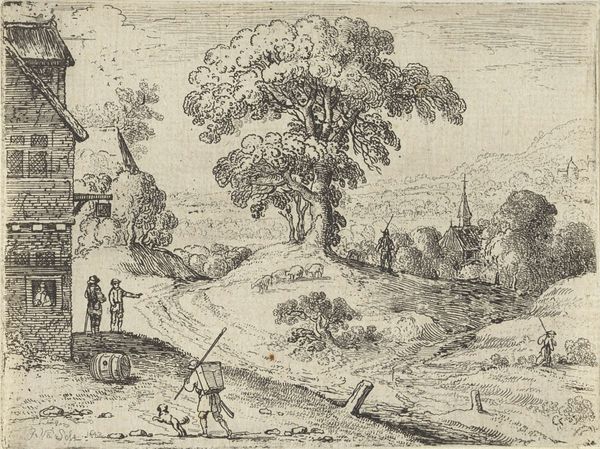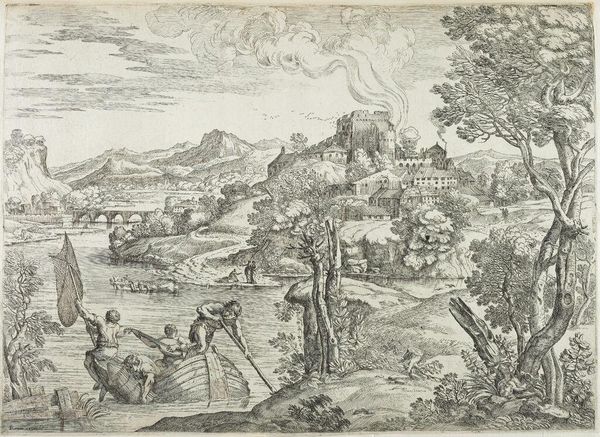
#
landscape illustration sketch
#
light pencil work
#
pen illustration
#
pen sketch
#
pencil sketch
#
personal sketchbook
#
pen-ink sketch
#
pen work
#
sketchbook drawing
#
sketchbook art
Dimensions: height 115 mm, width 164 mm
Copyright: Rijks Museum: Open Domain
Editor: We're looking at "Winterlandschap met ijsvermaak," or "Winter Landscape with Ice Skaters," a drawing made between 1620 and 1706, author unknown. It's at the Rijksmuseum. I'm struck by how dynamic it feels despite the limitations of the pen and ink; there’s so much life in this winter scene. What catches your eye in terms of its historical or social context? Curator: What strikes me is how these winter landscapes gained popularity, serving as visual testaments to Dutch resilience and community. Considering the Little Ice Age and the ongoing struggle for independence against Spanish rule, depictions of frozen canals becoming lively social spaces reinforced Dutch identity and their ability to persevere and find enjoyment, even amidst hardship. Editor: So the seemingly simple subject matter has a deeper symbolic meaning? Curator: Exactly. Beyond a literal depiction, the artist documented the transformation of a waterway used for commerce to a playground accessible to all social classes. Do you notice any symbols of commerce? Editor: Yes, the figure dragging the sled piled with what looks like barrels of goods? Curator: That’s right. Think of how the open exchange across social classes on ice visually reflects the values of the Republic in its early days. The etching becomes less about ice skating and more about national self-representation. Editor: I see what you mean. I hadn’t thought about how much societal information is communicated. Thanks. I’ll be sure to consider the role of social dynamics on my next museum visit. Curator: Likewise, understanding your emotional reaction is important, it adds layers of richness and engagement to my analysis.
Comments
No comments
Be the first to comment and join the conversation on the ultimate creative platform.

